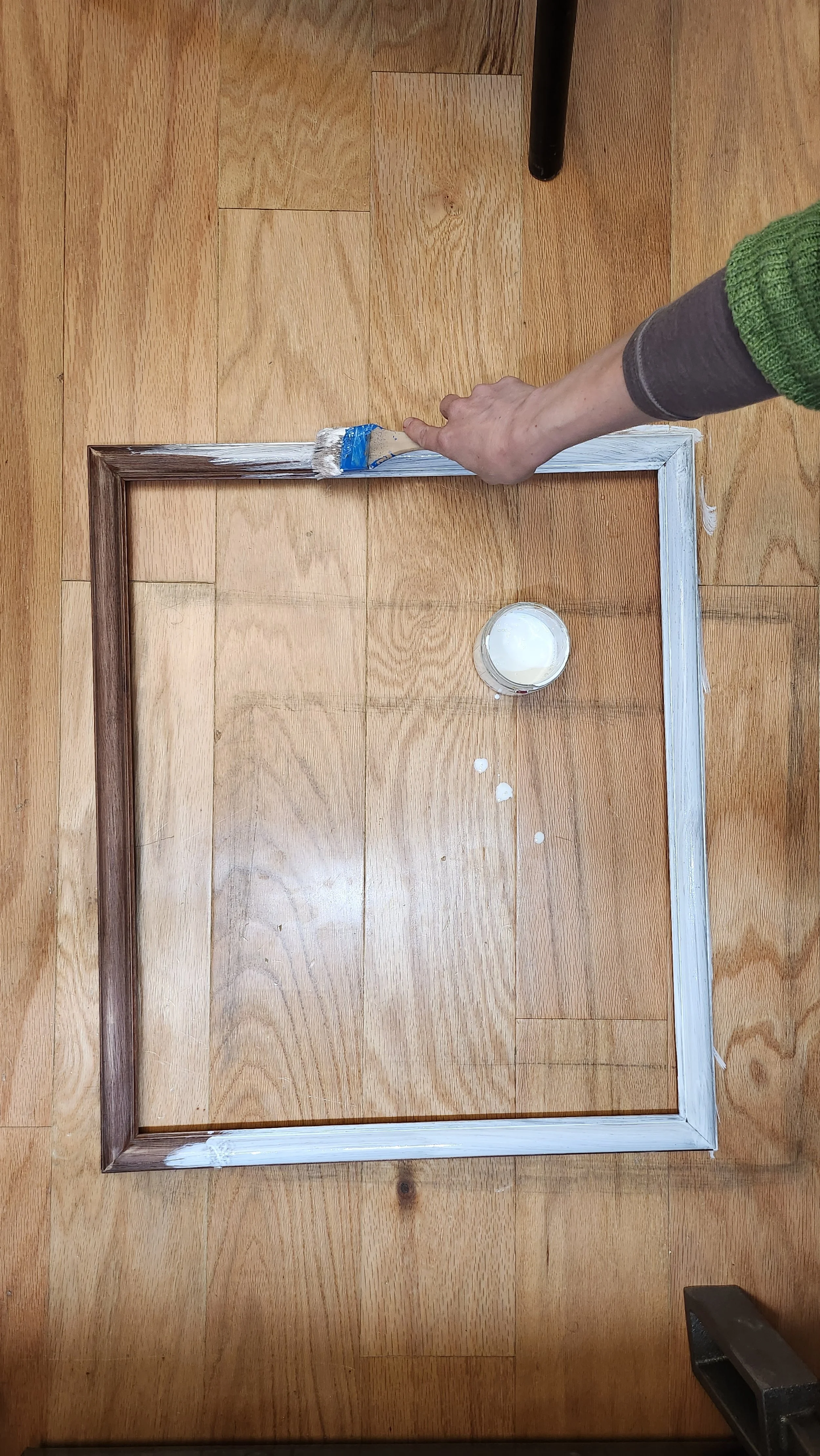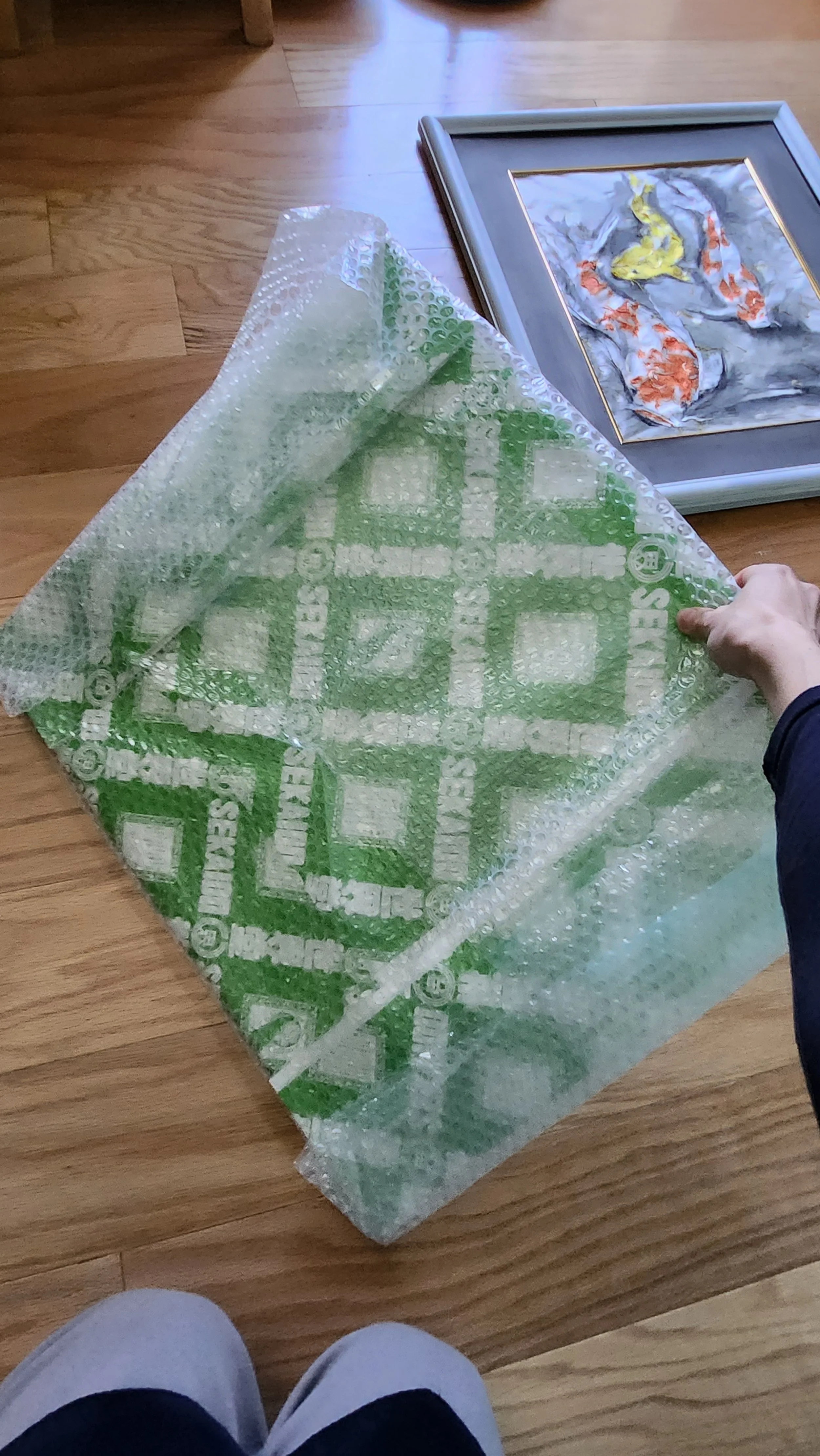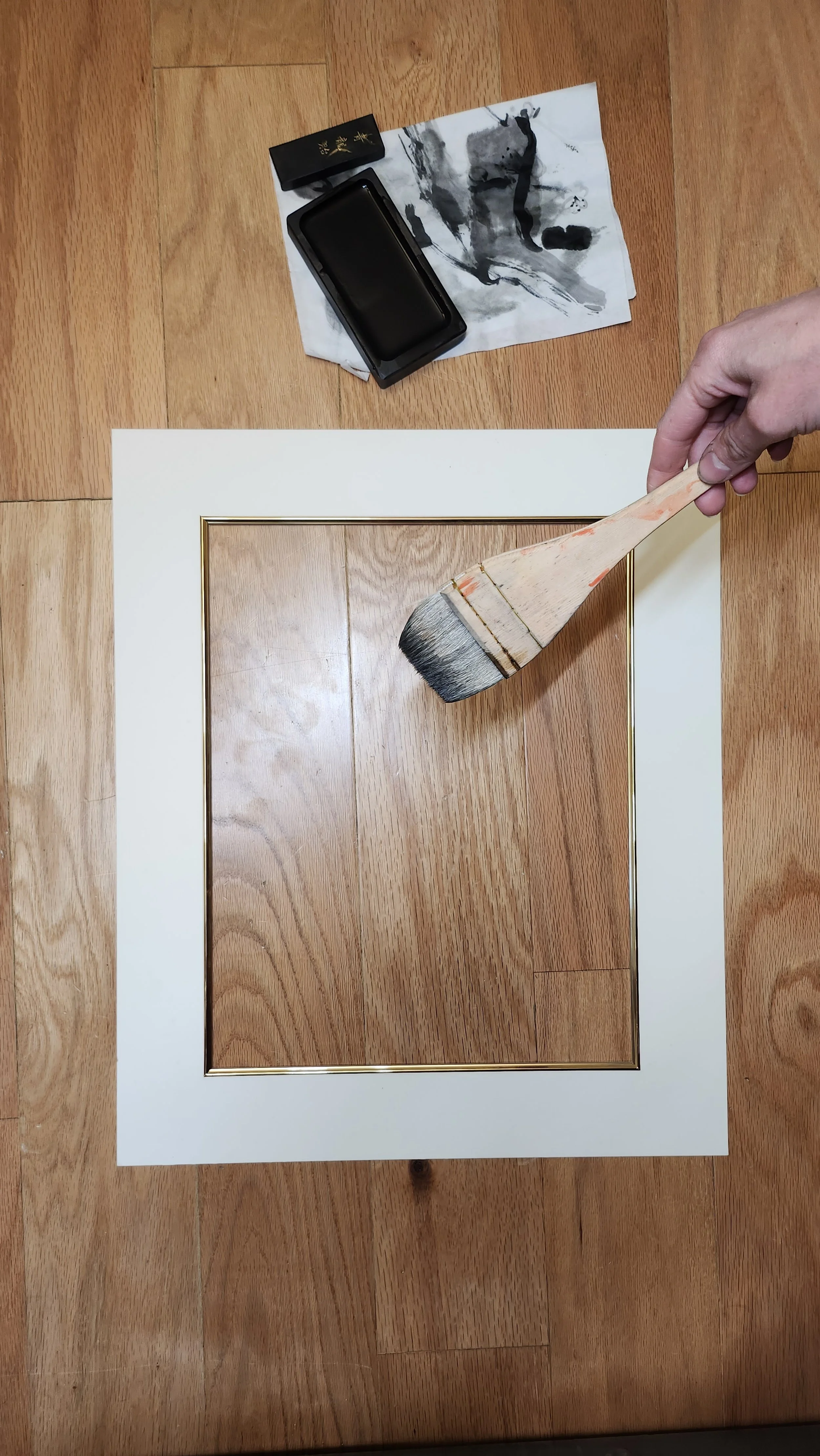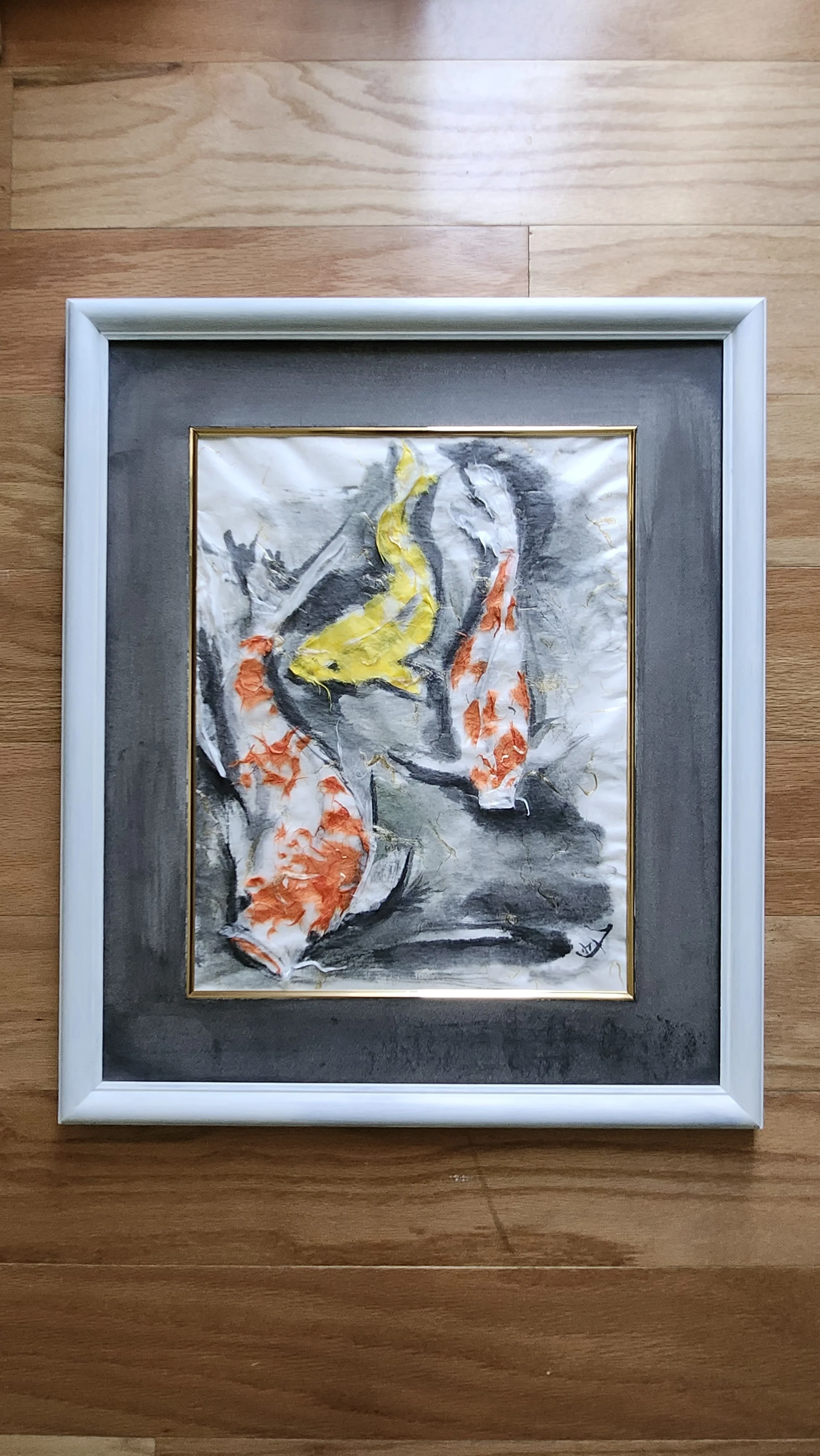Recycled Framing
Many artists are familiar with the cost of framing and practice a form of recycling frames. However, not everyone can see the potential in a discarded frame. Besides this being a great way to save money, it is a great sustainable practice to prevent more items from going to landfills and burns only to use up resources to create more.
I found this particular frame next to the bulky trash. The fact that it was real wood was a bonus. The problems were:
outdated stain and varnish on the wood
scuffed plexiglass
yellow spotting on the mat board
molded and warped backboard
no hanging wire
Sand and Paint Frame
I sanded back the varnish and some of the stain. Then I painted the frame with several coats of thin white paint, allowing each to dry before the next coat. Because this is real wood I could have applied a new stain or a subtle color wash. I decided the artwork I was making would look better with a slightly rustic all-over white.
Replace Glass
I ordered a replacement piece of real glass from a local frame shop. In this case I gave them the scuffed up piece of plexi to duplicate the size but usually I just measure it out to place an order. In the U.S. I used to order custom cut glass from the hardware stores. If the frame has real glass, it may just need a good scrubbing.
Ink Wash Matboard
I brushed a sumi ink wash across the old mat board to unify the look with the ink painting. For this one I wanted to try and reuse the mat because the gold trim inspired me to use washi with gold threads for the artwork. In most cases I make a new custom-cut matboard. You can also order custom-cut mat boards at your local framing shop which is significantly more affordable that a full custom frame job.
Finish and Attach Art
I finished my koi sumi ink and washi art piece and taped it to the back of the mat board with acid-free tape. I only attach the art at the top so it does not bunch up.
Cut backboard and Seal
I cut a new backboard to replace the molded one. I sealed the back of the framed art with brown paper tape and craft paper to prevent dust from getting into the art. Lastly, I attached a heavy-duty hanging wire to the hardware, that was still good. In most circumstances, I have to attach new hardware for the hanging wire. In these cases, it is important to drill tiny holes for the screws to go into. This ensures the frame does not split.
The final framed art
I did photograph this without the glass first, to prevent a reflection.
Comment below if you have questions about your own recycled framing or if you have other suggested sustainable living topics.






